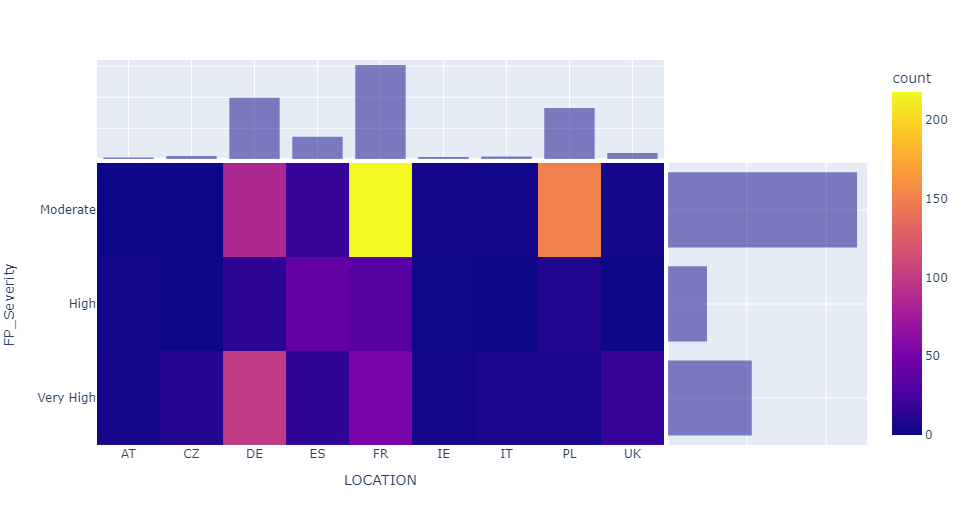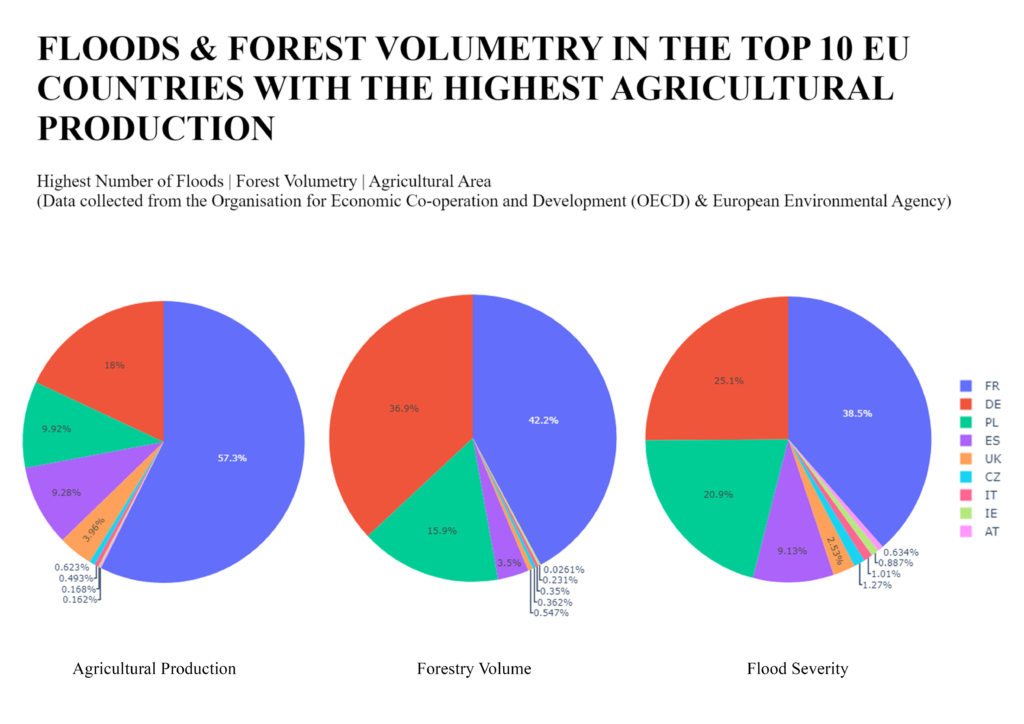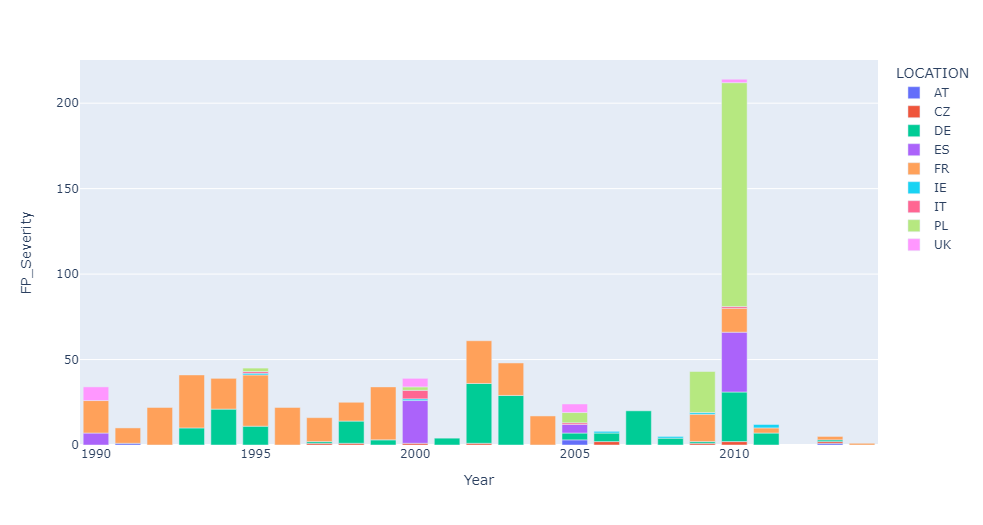Almost ten percent of Europe’s urban population is currently living in areas potentially at risk of flooding [EEA, 2022]. More than one third of the European population lives in coastal regions [EEA, 2022]. Forests play a vital role in controlling flooding by covering the soil surface from erosion due to rain, soaking up excess rainwater, and delaying the passage of rainwater to streams and rivers. Considering the increasing urbanization in Europe, is the forest volume/country actually reducing the flood phenomena occurring in a country?

Merging four open source datasets from the Organisation for Economic Co-operation and Development & European Environmental Agency, this analysis used values considering the top ten European countries with the highest agricultural production.

According to the dashboard above, France Germany and Poland they are represented with the highest values in all of the three categories without showing any direct reduction of floods in countries with the highest forest volumes. What is also worth to mention, is the example of Poland that even if it is the third country with the highest agricultural production in the countries above, during 2010, appears to have very high amount of flooding including floods from moderate to very high severity.

With this brief analysis of the data, we see that forests are not longer able to prevent floods especially in the countries with large cities and high urbanization, thus forest volume can not be a valid indicator for floods in national scale.
- European Environmental Agency, 2022, https://www.eea.europa.eu/
- Organisation for Economic Co-operation and Development, 2022, https://www.oecd.org/spain/

